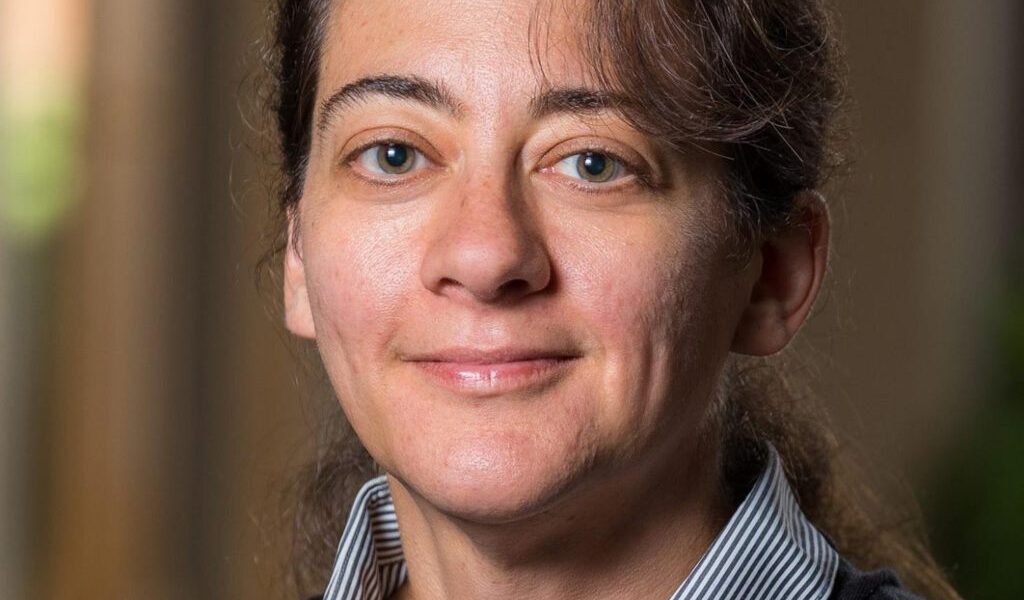This week on Minnesota Native News, a new state judge brings a wealth of Indian Country expertise and a new partnership gives Native students a place to practice traditional ways.
How can a lawyer who works on behalf of tribes make the most impact? Reporter Emma Needham tells us how and why Colette Routel became a judge.
Colette Routel is a professor of law and co-director of the Native American law and sovereignty Center at Mitchell Hamline School of Law in St. Paul. Her role is about to change. The Walz administration just appointed her to be a judge for the Hennepin County 4th Judicial District.
“One of the reasons that drew me to apply for this position is just looking at the unfortunate disparities that exist. In Minnesota, and in particular in Hennepin County,” said Routel. “I know that native people often get left out in statistical studies; that you don’t even realize the disparity exists. I thought, this is a way to use kind of my expertise and knowledge, as well as to you know, once you identify a problem, then you can also seek to find a solution to it,” she said.
Over the course of her 20-year career, Colette Routel has primarily represented Indian tribes. She has also worked on the bench for the White Earth and Shakopee Tribes. Routel sees her new experience as both a benefit and a chance to make change.
“I think having the diversity of experience that you have when you’re representing tribes doing criminal work doing Child Protection work during, during treaty rights, housing, you know, all of that will assist me when I’m handling a really broad docket of cases in Hennepin County” said Routel.
Hennepin County judges handle around 40,000 cases a year, a number that some lawyers might find daunting.
“For me, it gives you an opportunity to make an impact. No matter how the system is set up, if you have a really good judge, you can make a great impact,” said Routel.
Colette Routel has worked hard to make sure the Mitchell Hamline law degree is accessible to Native people wherever they live. Most of the curriculum is online.
“Our primary emphasis for many years, and I would say that continues, is really to attract, admit and graduate native attorneys who are going to work for their home communities,” she said.
Routel says she hopes one of them might fill her shoes at Mitchell Hamline.
“I think my experience kind of shows how helpful it is to have representation and hopefully there will be many native people appointed to the bench in the next several years.”
—
New funding from the legislature means more teaching AND learning in Afton. Here’s Emma Needham again.
Anishinaabe Academy is not your average Minneapolis Public School. This K-5 Environment provides Anishinaabe and Dakota Programming through the native cultural lens.
Laura Sullivan is a member of Ho-Chunk Nation and has been principal of Anishinaabe Academy for about 10 years. The school has both Anishinabe and Dakota tracks, including language learning.
Anishinaabe Academy already devoted its courtyard to native medicines. This fall thanks to Legislative Funding, Anishinaabe Academy will partner with the Belwin Conservancy. Belwin provides conservation, education, and immersive experiences on 1,500 acres in the Saint Croix Valley.
“We started brainstorming how can we bring our medicines here so our kids could actually harvest our medicine. So sweet grass and sage, more specifically. We do have cedar trees, as well, but how can we have that be a part of who we are here and as far as a school and community?” said Sullivan.
“Then when we started talking to Belwin, and sharing, you know, what our dream was, we were just blown away by their offer of; let’s write something together so that we can make this happen,” she said of the new partnership.
Principal Sullivan says the partnership will benefit both the students at Anishinaabe Academy, and the scientists at Belwin.
“One of the exciting things is, and I loved it, because Belwin folks right away said, they really want it to be a two-way partnership, that they realize that there’s lots that they can learn from us. The gift there is it’s not only that learning for themselves, but there’s also the knowledge that they can share with other folks that come to Belwin,” said Sullivan.
Anishinaabe Academy Prinicipal Sullivan says that changes are already happening and that the school is open to working with other programs and schools. She encourages interested parties to reach out.
“We are very much an open door. If people ever have any questions we also have not just our website our school website has some stuff but our Facebook Anishinaabe Academy if people want to find out more about who we are that’s the place to go,” said Sullivan.
Emma Needham reporting for Minnesota Native News.
Subscribe to Minnesota Native News in your favorite podcast app
- Indigenous Author Publishes Book of Anishinaabe Poem-SongsMarcie R. Rendon released her first book of poetry, “Anishinaabe Songs for a New Millenium.” The book launched at Birchbark Bizhiw in Minneapolis last Tuesday, July 16th. Two Anishinaabe musicians …
- Headlines 7/18/24This week, two examples in Minnesota that support the larger “Land Back” movement across Indian Country, Mille Lacs Band of Ojibwe’s new Chief Executive, urban Native-led organizations celebrate during a …


 Donald Eubanks’ Gift for Speaking Out for Racial and Social Justice
Donald Eubanks’ Gift for Speaking Out for Racial and Social Justice